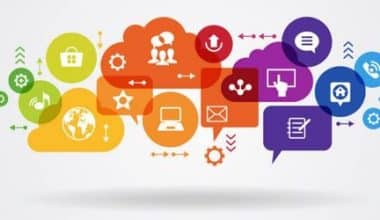Managing available resources is an important part of any project’s overall success. Effective resource management ensures that the right tools are available for the right jobs at the right times. This resource management software is essential for the efficient administration of these tools. Here, you’ll learn about marketing resource management tools and the top software for managing your company’s resources.
What Is a Resource Management Tool?
Resource Management is the process of planning, scheduling, and assigning personnel, financial resources, and technological resources to complete a project.
A resource management tool will assist your company in making the most of your resources while giving you a clear picture of your resource pool, what you have used of it, and what you still have to give.
What Are the 3 Types of Resources in Resource Management?
The three types of resources in resource management are:
#1. People (Work Resources)
Human resources are necessary for the project activities to be carried out efficiently, regardless of the project’s size and complexity.
#2. Capital (Cost Resources)
Capital is the second crucial resource for completing a project successfully. As you are aware, all initiatives require funding regardless of their nature, size, or complexity.
#3. Material Goods (Material resources)
Additionally, projects deplete material resources, which might include various materials, supplies, and/or project-related things. While the types of assets, or items, differ from project to project, it is very probable that your project will require some sort of material resource.
Typically, that is what you spend the project budget on.
What Tools Are Used For Resource Planning?
Resource planning tools are forms of project management tools that help with planning and scheduling. You can assign resources using a tool like this.
You can keep tabs on who is contributing to which project, when, and for how long.
Examples are:
- Forecast: Forecast is a resource management tool that allows you to keep track of projects and time tracking.
- Smartsheet: Smartsheet is a resource management tool used to eliminate uncertainty in the workplace. It can be used to gain a quick overview of your resources.
- Ganttic: Ganttic helps you to keep track of tasks, projects, and resources. It also regulates the workload, timesheets, and timetables for your staff by using a calendar view to manage them.
- Float: With the use of the resource management tool called Float, staff members may design their own work schedules, keep track of the time spent on tasks, and even plan their own personal time off. Float is a resource management tool that also provides straightforward workforce administration.
10 Best Resource Management Tools
#1. Forecast
In the forecast, a complete project & resource management software is anticipated. Forecast is an all-in-one platform that helps you manage resources by providing a full range of planning, allocating, scheduling, and monitoring tools, from quote to invoice.
It is the ideal choice for professional services organizations to replace point-fragmented solutions since it combines task management, time tracking, and budget tab capabilities.
#2. Runn
Resource forecasting and planning software. Runn is a cutting-edge resource management tool that offers comprehensive information to every employee and enables resource planning that is informed.
Runn has a modern look and respectable potential for you to enhance your resource management strategy, despite its relative youth on the market.
Every team member’s earnings, capacity, and utilization rate may be examined in detail, as well as the percentage of the allotted time that is billable or non-billable, in a daily, weekly, or monthly view.
#3. Paymo
This is a team resource scheduling software. Paymo is a project management solution that includes extensive resource planning and scheduling components, in addition to task management, native time tracking, and invoicing.
In order to assist you in allocating resources effectively, the tool combines team capacity, workload, and availability on a visual timeline. Changes have been mapped both ways because tasks and bookings are synchronized.
#4. 10,000 ft – Smartsheet for People Scheduling
The people’s schedule is what 10,000 ft is all about. You can check here to see who is available, on vacation, or overbooked. Along with a number of common but well-designed resource management capabilities, the vendor at least makes that claim.
10,000 FT, which Smartsheet recently bought, has drag-and-drop capabilities, the ability to build detailed reports from time monitoring, and an intelligent resource matching tool. It greatly helps project managers match the appropriate personnel to particular tasks without sacrificing a thorough understanding of everyone’s bookings.
#5. Scoro: Software for business management
A resource planner with a calendar view is a feature of the resource management tool Scoro, which makes planning the daily schedule and tasks easier by showing everyone’s capacity.
You can drag and drop tasks onto your schedule based on how they will affect your work hours whenever you plan to allocate them. Everyone can choose whose schedule they want to see with ease using the filters in the Planner.
Scoro also provides the option to filter by projects, activity types, deadlines, and priority.
#6. Mavenlink: A Tool for Enterprise Resource Management
Mavenlink offers a comprehensive set of enterprise tools for project and resource management, including all resource planning elements like resource assignment, allocation, or quick editing under one roof, similar to Forecast.
Project managers that wish to simplify resource management with a single, user-friendly, visual interface were the target audience for Mavenlink’s Master planning.
#7. Accelo: A ServOps Solution for Project, Resource, and Email Management
Accelo enables users to manage all client-related activities. They initially created it as an internal tool for resolving issues with sales, projects, service, and billing. Smaller teams and organizations that lack a lot of resource management maturity can benefit from the technology.
It gives you the power to schedule the assignment once you’ve identified the best candidate. In Accelo, you can only assign individuals to tasks.
#8. Tempo Planner for Jira: A Resource Management Add-on
An integrated Jira add-on for resource planning and capacity reporting is called a Tempo planner. Given that it connects resources to issues or tasks in Jira, it is the tool of choice for planning.
As the add-name ones suggest, it is a true planner, so it is unable to communicate project and task progress in real-time like other tools. However, you can check your resource planning efficiency in the report section if you want to do so.
The capacity planned time is displayed here in relation to the necessary time.
#9. BigTime: Managing Your Firm’s Staff Capacity with BigTime, a Time & Billing Software
BigTime is a cloud-based system that was originally developed as time-billing and financial software to assist professional services organizations so they could better manage their time-billing. They added resource and project management to the stack of financial functions as it grew into a more comprehensive, full-blown system.
You must always include the internal cost and the rate card when allocating a worker to a task in BigTime because it is so financially driven.
As a result, they leave you with numerous manual chores to complete, but you also have clear visibility of the cost of each task.
#10. ResourceGuru
A software called ResourceGuru offers a straightforward method for scheduling personnel, equipment, and other resources. You can see clearly what each resource is working on and when it is available thanks to the software’s calendar-style interface, which enables you to make the most of your resources.
There is transparency regarding roles thanks to individual resource dashboards. The program also enables capacity planning, allows for the tracking of team utilization, and allows for the monitoring of business performance.
Resource Management Tools Excel
A spreadsheet program called Microsoft Excel is used to work with saved data. When it comes to budgeting, organizing client sales lists, or analyzing stocks or issuers, Excel is a potent tool that has become ingrained in business processes all over the world.
Excel’s sophisticated analytical and computing tools make it a popular choice among finance and accounting professionals. Users of Microsoft Excel can find patterns in data and classify them into useful groups.
Additionally, Excel handles human resources tasks that assist firms in understanding the composition and activities of their staff, such as categorizing hours worked and arranging employee profiles and expenses.
In a chart, pivot tables condense data from a worksheet.
Human Resources Management Tools
Human resource tools are a diverse variety of technical options that assist firms in efficiently managing their normal human resources responsibility.
Manually carrying out HR tasks is laborious, time-consuming, and compliance-driven. Human resource professionals may save time and money, and manage their employees more effectively thanks to the power of automation that is used by HR software.
Tools Used by a Human Resource Manager
The tools used by a resource manager include the following:
#1. Breezy:
Breezy is a human resources management tool designed for small, medium, and large organizations. One of its key selling features is how smoothly it interacts with your current HR solutions.
Data loss won’t happen during migration or integration, so don’t be concerned.
#2. Trello:
Trello is the best tool to use if you have a lot of tasks that need management and follow-up because it enables you to establish a project and all the phases involved in its preparation, including who, when, how, why, and how much it will cost the business.
#3. Asana:
Asana is a piece of software that lets you create new projects and oversee their progress without using email. We can add each phase to the project parameters, and those in charge can closely monitor it.
#4. ADP:
An HR tool on the cloud called ADP is an all-in-one solution that unifies HR, payroll, talent, time, and tax and benefits administration, in contrast to other HR systems that offer a focused solution.
Marketing Resource Management Tools
Marketing resource management tools are collections of software that help firms optimize their strategies and workflows.
Below are lists of 20 marketing resource management tools:
- HubSpot
- HubSpot Academy
- Content Marketing Institute
- Copyblogger
- Google Ads Blog
- WordStream
- Search Engine Land
- Search Engine Watch
- Search Engine Journal
- Moz SEO Learning Center
- Unbounce Blog
- GrowthHub
- Social Media Examiner
- The Verge 1
- Ars Technica
- MarketingProfs
- Google Analytics Academy
- Backlinko
- Ahrefs
- Neil Patel
Check out the preceding marketing resource management tools, and pick the one that works best for your business.
What Are Resource Management Techniques?
These resource management techniques are used by project managers to forecast, plan, allot, level, and optimize resources during the course of a project. These are:
#1. Resource Prediction
The number of resources that will be needed for a project must be estimated, together with how those resources will fit into the organization’s current plans.
#2. Resource Distribution
Examining your team’s capabilities and finding opportunities for better resource allocation are the goals of resource leveling. By fully understanding what each team member can offer, you may assign tasks based on how well they can increase resource efficiency.
#3. Resource Management
As important as proper resource planning is resource tracking. To locate underutilized resources, project managers must keep track of resource usage. The resource management plan can then be changed or they can simply reallocate those resources.
What Is The Main Aim Of Resource Management?
By providing information on their workloads, availabilities, project time requirements, capabilities, and other factors, resource management assists firms in making the most use of their workforce.
By providing managers with the tools they need, organizations may ensure that projects are properly and effectively assigned to the appropriate resources.
Conclusion
Resource management done correctly may lower costs, increase efficiency, and increase production for your company. To provide resource managers more control over the delivery, resource management makes sure they have on-demand, real-time visibility into people and other resources.
From all explained, we can infer that resource management tools are very vital to project management
Resource Management Tools FAQs
What benefits do you get from managing resources?
The company’s most valuable asset must be supported, protected, and used to its strategic advantage through effective resource management. An effective resource management approach can boost productivity, raise profit margins, and boost customer and staff happiness.
What are the Marketing Resource Management Tools?
Marketing resource management tools are collections of software that help firms optimize their strategies and workflows, and they include HubSpot, HubSpot Academy, Content Marketing Institute, Copyblogger, Google Ads Blog, etc.






